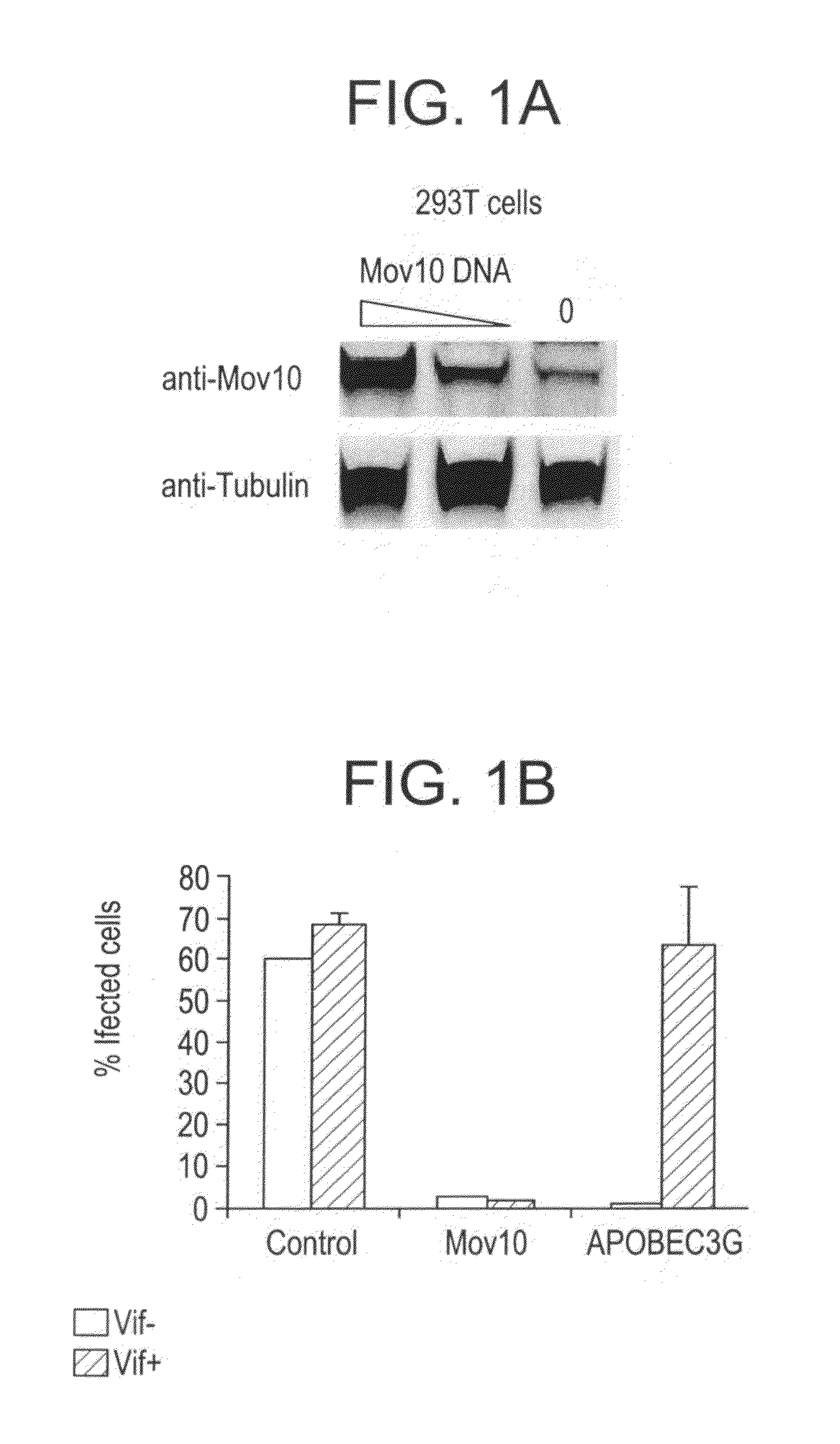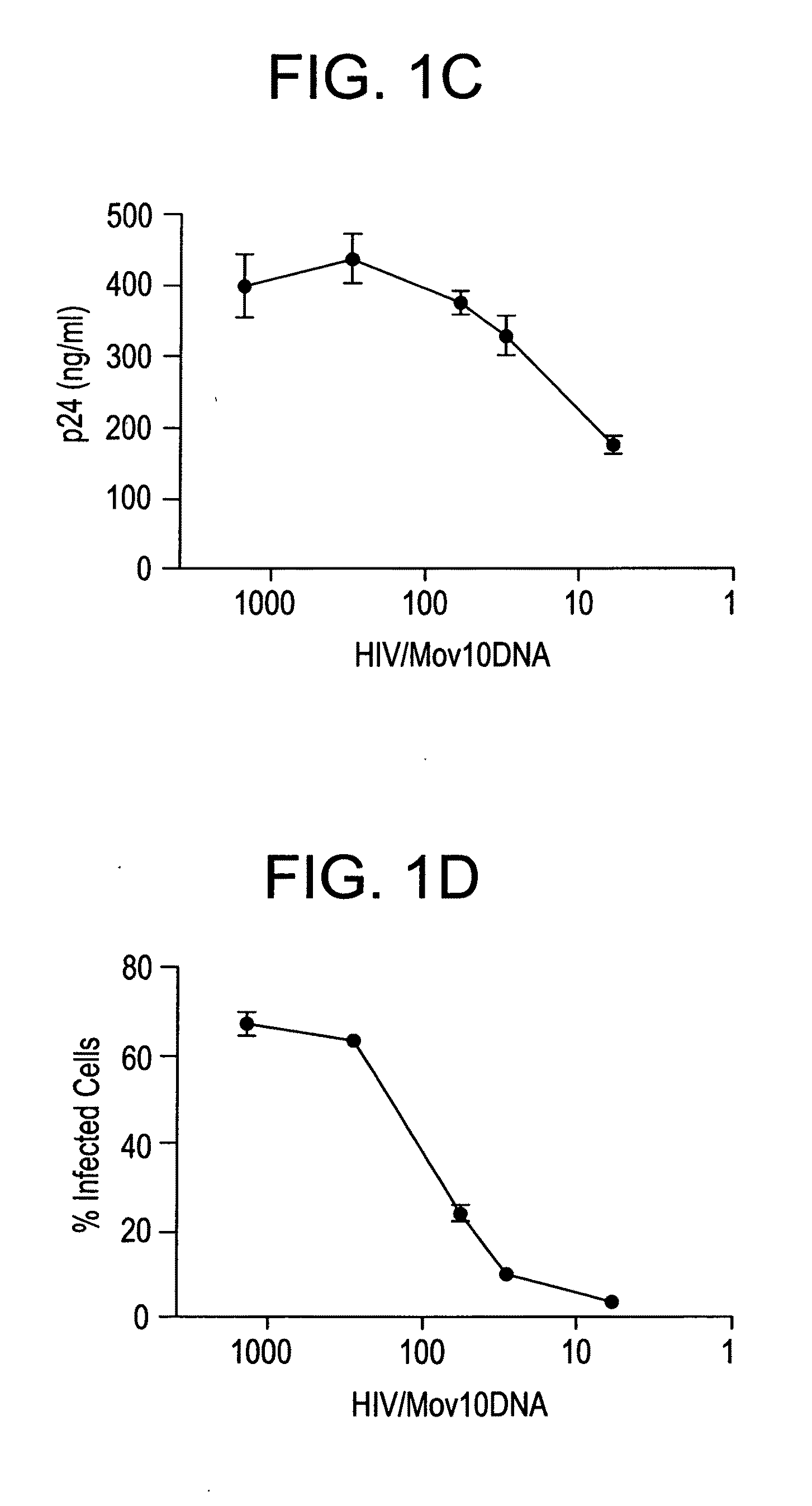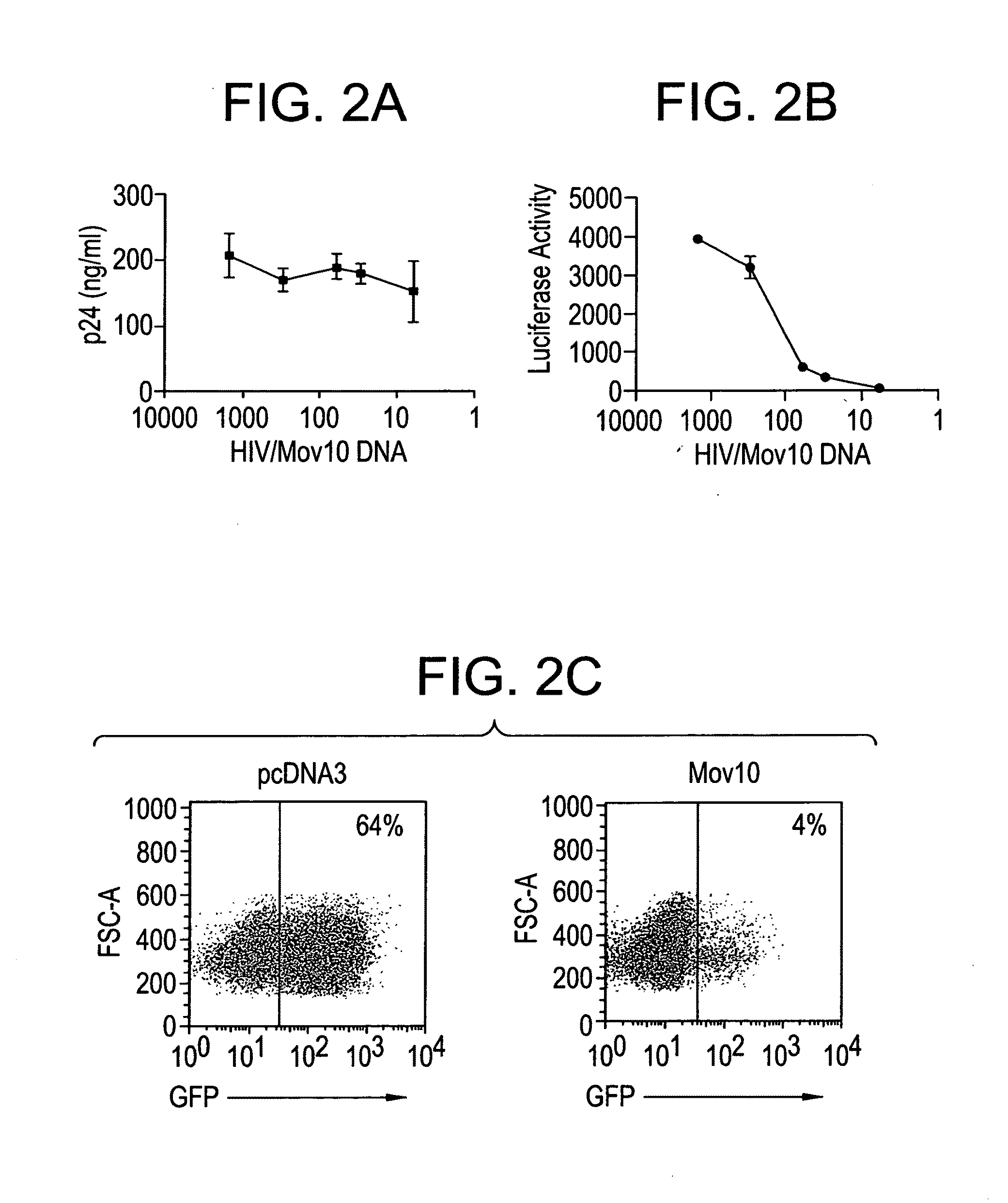Methods of inhibiting retrovirus replication and infectivity
a retrovirus and infectivity technology, applied in the field of inhibiting retrovirus replication and infectivity, can solve the problems of difficult detection of viruses, difficult detection of proteases or reverse transcriptases, and ineffective industrial drugs designed as proteases and reverse transcriptases, etc., to reduce the transcription of the mov10 gene, inhibit the efficiency of retrovirus incorporation, and increase transcription, translation or biological activity
- Summary
- Abstract
- Description
- Claims
- Application Information
AI Technical Summary
Benefits of technology
Problems solved by technology
Method used
Image
Examples
example 1
Materials and Methods
Cell Purifications and Culture. Blood samples were obtained from anonymous healthy donors as buffy coats (New York Blood Center). New York Blood Center obtains written informed consent from all participants involved in the study. Because all the samples were sent as anonymous, the Institutional Review Board at New York University medical center determined that the study was exempt from further ethics approval requirement. Peripheral Blood Mononuclear cells (PBMC) were isolated with Ficoll-Hypaque (Amersham Pharmacia). CD4+ T cells were isolated from PBMC using magnetic bead sorting (Invitrogen, Dynabeads). Purified CD4+ T cells were activated using anti-CD3 / CD28 coated beads (Dynabeads, Invitrogen) and cultured in RPMI media (Life Technologies) with 10% fetal calf serum (FCS; Atlanta Biologicals) and supplemented with IL-2 (200 U / ml). Jurkat and Hut78 cells were also grown in RPMI-10% FCS media. HEK293T and HeLa cell lines were maintained in DMEM supplemented wi...
example 2
Materials and Methods
In an effort to study retrotransposon suppression by Mov10, an assay by Esnault et al. (Esnault et al. Nature (2005) 433:430-434) was adapted. Mammalian long-terminal-repeat (LTR) retrotransposons (or endogenous retroviruses) such as murine IAP and MusD sequences or human endogenous retroviruses (HERVs) are structurally similar to infectious retroviruses.
200,000 Hela cells were plated in a 6 well plate a day before transfection at 70-90% confluent monolayer. One well was used for transfection with GFP plasmid alone for control. Transfection mix: 1 μg of retrotransposon plasmid and 0.5 μg of Mov10 plasmid were prepared according to manufacture protocol. Transfection was performed using the lipofectamine 2000 reagent (Invitrogen). 1.5 μg of total diluted DNA was mixed with 4.5 μl of diluted lipofectamine 2000. The complex was added to the cells, and the media was changed the next day. Cells were trypsinized 2 days posttransfection, collected in one tube and then d...
PUM
| Property | Measurement | Unit |
|---|---|---|
| Fraction | aaaaa | aaaaa |
| Biological properties | aaaaa | aaaaa |
Abstract
Description
Claims
Application Information
 Login to View More
Login to View More - R&D
- Intellectual Property
- Life Sciences
- Materials
- Tech Scout
- Unparalleled Data Quality
- Higher Quality Content
- 60% Fewer Hallucinations
Browse by: Latest US Patents, China's latest patents, Technical Efficacy Thesaurus, Application Domain, Technology Topic, Popular Technical Reports.
© 2025 PatSnap. All rights reserved.Legal|Privacy policy|Modern Slavery Act Transparency Statement|Sitemap|About US| Contact US: help@patsnap.com



